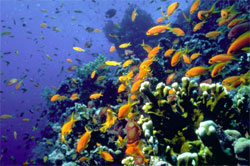|
Turkish English | ||
|
BWM
Ballast water is necessary for control stability,draught,trim or stresses of the ship.However,ballast water may contain harmful aquatic organisms and pathogens and sediments. The International Convention for the Control and Management of Ships’ Ballast Water and Sediments was adopted by IMO.This Convention includes technical standards and guidelines to management of ships’ballast water and sediments.
Guidelines have been written for:
The ballast water management plan shoud be specific to each ship and at least the following information should be included:
Ships’name; Flag; Port of registry; Gross Tonnage; IMO number; Length; Beam; International call sign; Total ballast capacity of the ship in cubic metres; Identification of the appointed balllast water management officer; drawing of the ballast system; ballast water pump capacities;and, ballast water treatment system.
Ships must have a Ballast Water Record Book (Regulation B-2) to record when ballast water is taken on board; circulated or treated for Ballast Water Management purposes; and discharged into the sea. It should also record when Ballast Water is discharged to a reception facility and accidental or other exceptional discharges of Ballast Water . The specific requirements for ballast water management are contained in regulation B-3 Ballast Water Management for Ships:
Other methods of ballast water management may also be accepted as alternatives to the ballast water exchange standard and ballast water performance standard, provided that such methods ensure at least the same level of protection to the environment, human health, property or resources, and are approved in principle by IMO’s Marine Environment Protection Committee (MEPC). Under Regulation B-4 Ballast Water Exchange, all ships using ballast water exchange should:
When these requirements can not be met areas may be designated where ships can conduct ballast water exchange. All ships shall remove and dispose of sediments from spaces designated to carry ballast water in accordance with the provisions of the ships’ ballast water management plan (Regulation B-4). Threatened Species
|
|
© Ms. Prof. Dr. Mükerrem Fatma İlkışık
The content of this site is for information purposes. For making a final decision on their application, please refer to IMO publications or yourclassification societies. | ||
